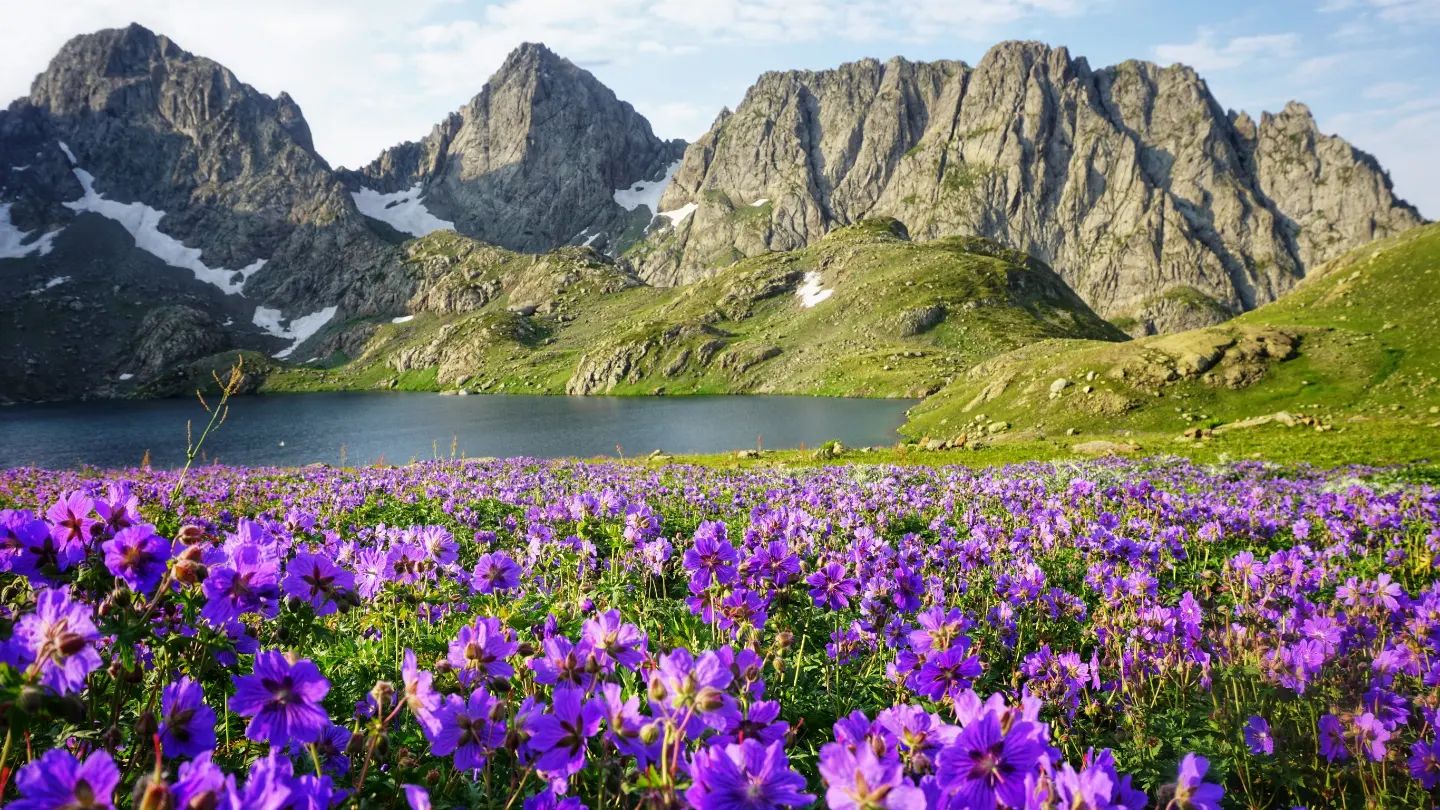An interactive map of the Transcaucasian Trail north-south route
Meghri to Shishkert

Hover the mouse over a section to see its elevation profile.
Start date of trip: 15th June 2023. Article publication date: 11th February 2024.

Hover the mouse over a section to see its elevation profile.
The Transcaucasian Trail is actually two hiking routes in the Caucasus region. The East-West Route joins the Black Sea and the Caspian Sea via Georgia and Azerbaijan, but it currently only exists in fragments. In contrast, the North-South Route was declared open to through-hikers in 2023. This route joins the Greater and Lesser Caucasus mountain ranges through Armenia and Georgia. It is shown in the map above.
The map is intended to give a feel for the route. I divided it into sections, which are shown as alternating red and orange lines. Hover the mouse over any section to show an elevation profile and description in the side panel. The shading of the background map shows elevation above sea level, with lighter colours being higher.
Not everybody has the time, resources, or inclination to hike the entire TCT. The trail is also a great framework for shorter hikes. In the next sections, you can read about the differences between Armenia and Georgia, and hints for choosing shorter sections for hiking.
There are many differences between Armenia and Georgia which are noticeable from a hiker’s perspective. The TCT project is less advanced in Georgia, with some sections likely to change significantly in the coming years. Armenia has a higher proportion of smooth, open landscapes more suitable to herding, whilst Georgia is more crinkled and forested. The Armenian section passes more monasteries and other historic sites, and encounters with rural people were more common for me. In contrast, it seems that the Georgian TCT prioritises solitude where possible. Georgia is wealthier, so it has more cars, more paved roads, and more fences. The people of both countries are very hospitable, but Georgia is the land of wine and in Armenia I mostly was offered vodka (oghi).
 A unique part of the TCT is the traverse of the Gegham volcanic field, which culminates on Mount Azhdahak’s snowy caldera.
.
It’s difficult to distil what’s unique about a region. The unique features of the Caucasus pervade the TCT, such as the hospitality and the living history (for example the monasteries and Svan towers). However, most hikers find the Gegham Traverse (14) very memorable, with big blocks of obsidian scattered over volcanic grasslands, red rock, an ice-rimmed caldera, and the intensely hospitable summer nomads who invite hikers to eat and sleep in their house-tents.
A unique part of the TCT is the traverse of the Gegham volcanic field, which culminates on Mount Azhdahak’s snowy caldera.
.
It’s difficult to distil what’s unique about a region. The unique features of the Caucasus pervade the TCT, such as the hospitality and the living history (for example the monasteries and Svan towers). However, most hikers find the Gegham Traverse (14) very memorable, with big blocks of obsidian scattered over volcanic grasslands, red rock, an ice-rimmed caldera, and the intensely hospitable summer nomads who invite hikers to eat and sleep in their house-tents.
 Tobavarchkhili is a beautiful lake for swimming, albeit a little cold!
.
Refreshing swims and beautiful reflections can be found in Tobavarchkhili and its neighbouring lakes (34) and in the Samsari Range (22).
Tobavarchkhili is a beautiful lake for swimming, albeit a little cold!
.
Refreshing swims and beautiful reflections can be found in Tobavarchkhili and its neighbouring lakes (34) and in the Samsari Range (22).
 A hail cannon, one of the quirky sights at the northern end of the Armenian TCT
.
Between Stepanavan and Lake Arpi (sections 19 and 20), the TCT passes an arboretum, a large lily pond, neolithic standing stones, and agricultural hail cannons. Section 5 takes in hot springs, igneous rock formations, and ancient bridges and tombs.
A hail cannon, one of the quirky sights at the northern end of the Armenian TCT
.
Between Stepanavan and Lake Arpi (sections 19 and 20), the TCT passes an arboretum, a large lily pond, neolithic standing stones, and agricultural hail cannons. Section 5 takes in hot springs, igneous rock formations, and ancient bridges and tombs.
Some measurements of the Transcaucasian Trail are shown in the table below:
| Distance | Elev. change (m) | |||
|---|---|---|---|---|
| km | mi | Ascent |
Descent | |
| Armenia | 860 | 534 | 32,164 | 30,813 |
| Georgia |
705 | 438 | 26,931 | 29,078 |
| TCT total | 1,565 | 972 | 59,095 | 59,891 |
Note: Total ascent and descent are difficult to estimate. Small wobbles in the elevation profile can artificially increase these figures by 50% or more (in both GPS recordings and altitude estimates from digital elevation models). For a good explanation, see here. The elevation profiles shown here are interpolated from the SRTM 1-arc-second dataset. The total ascent and descent are calculated from these profiles by filtering with a 10-m threshold.
The TCT passes close to these regions:
| Region | Distance (km) |
|---|---|
| Iran | 1.8 |
| Azerbaijan (except Nakhchivan) |
3.0 |
| Nakhchivan | 2.1 |
| Turkey | 15.4 |
| South Ossetia | 2.9 |
| Abkhazia | 1.8 |
| Russia | 3.0 |